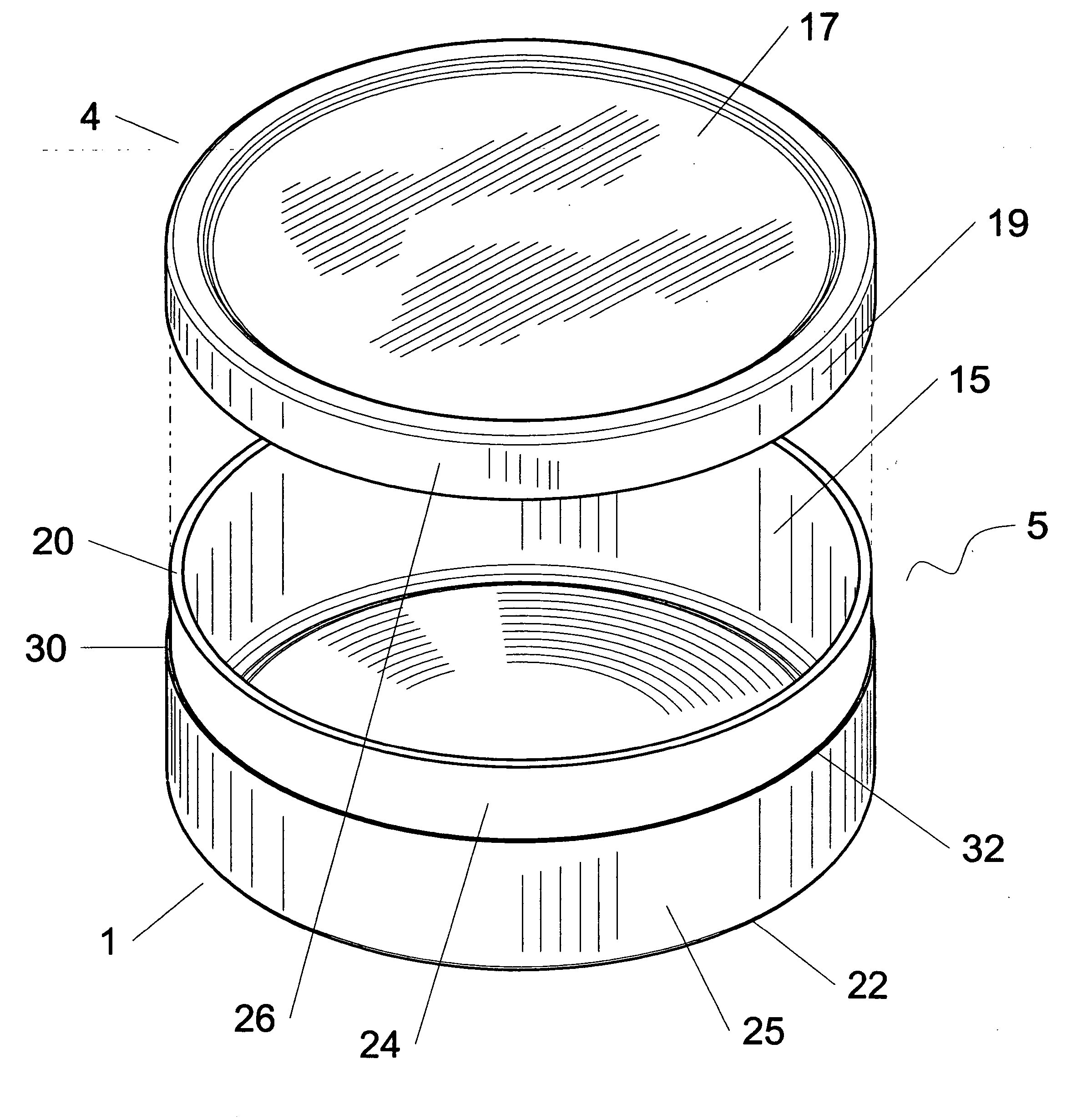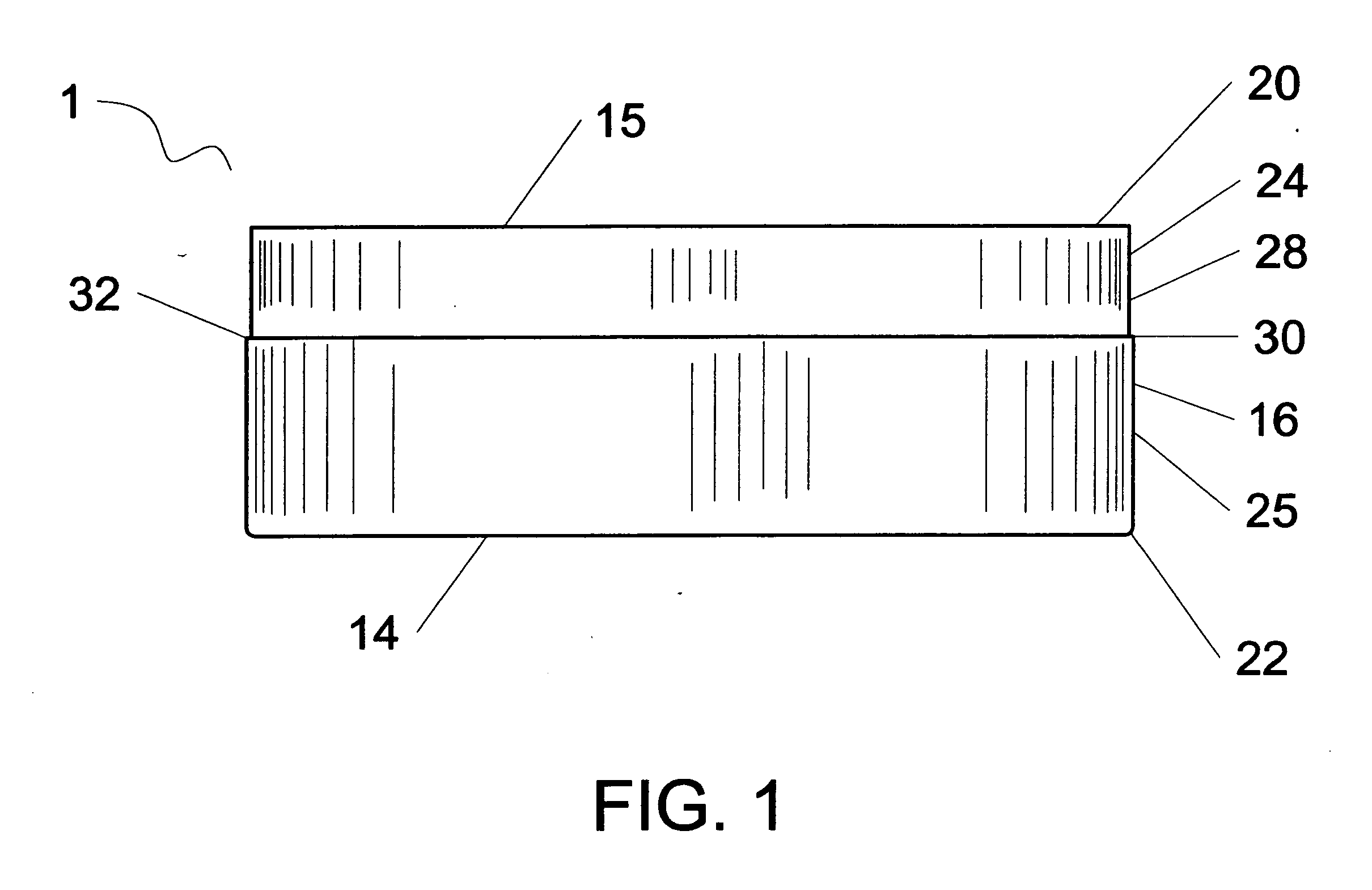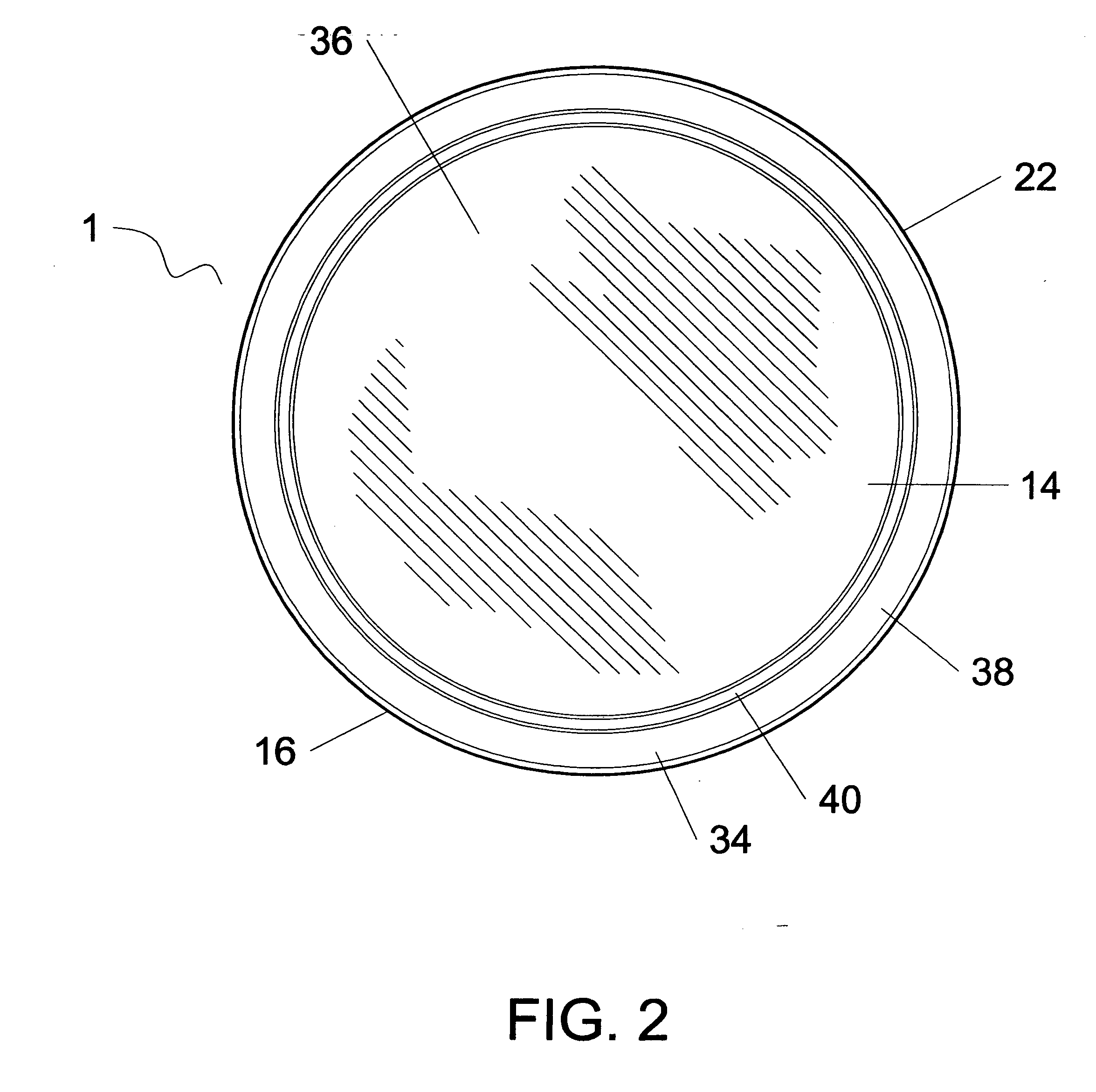Container with a one-piece body
- Summary
- Abstract
- Description
- Claims
- Application Information
AI Technical Summary
Benefits of technology
Problems solved by technology
Method used
Image
Examples
example
[0063] This example provides a description of an exemplary fiber thermoforming operation used to form a fiber container body as described above. A molding machine was used to form the container body. The molding machine included a slurry tank, a vertically moveable platen for mounting a first cavity mold; a vertically and horizontally moveable platen for mounting a first transfer core; a stationary platen for mounting a second and third cavity mold; and a second vertically and horizontally moveable platen for mounting second and third transfer cores.
[0064] The slurry used to form the container body was prepared with about 99.3 percent ordinary tap water and about 0.7 percent cellulose pulp that was about 50 weight percent long, brown corrugate fiber and about 50 weight percent short, white paper fiber. The pulp fibers in the slurry tank were agitated and circulated for sufficient suspension. The slurry was maintained approximately at room temperature.
[0065] During pre-mold set-up,...
PUM
| Property | Measurement | Unit |
|---|---|---|
| Length | aaaaa | aaaaa |
| Length | aaaaa | aaaaa |
| Fraction | aaaaa | aaaaa |
Abstract
Description
Claims
Application Information
 Login to View More
Login to View More - R&D
- Intellectual Property
- Life Sciences
- Materials
- Tech Scout
- Unparalleled Data Quality
- Higher Quality Content
- 60% Fewer Hallucinations
Browse by: Latest US Patents, China's latest patents, Technical Efficacy Thesaurus, Application Domain, Technology Topic, Popular Technical Reports.
© 2025 PatSnap. All rights reserved.Legal|Privacy policy|Modern Slavery Act Transparency Statement|Sitemap|About US| Contact US: help@patsnap.com



